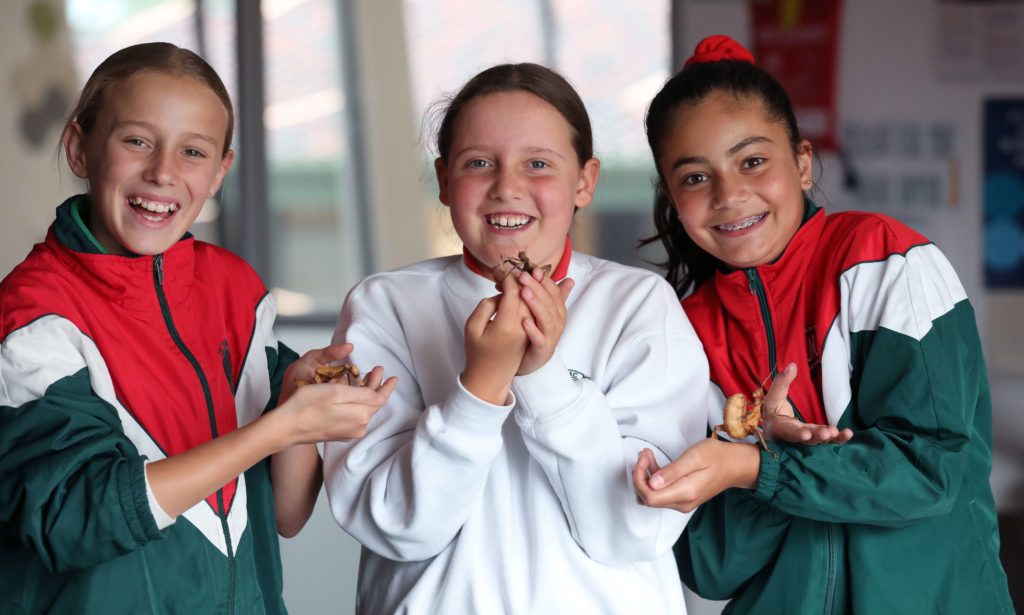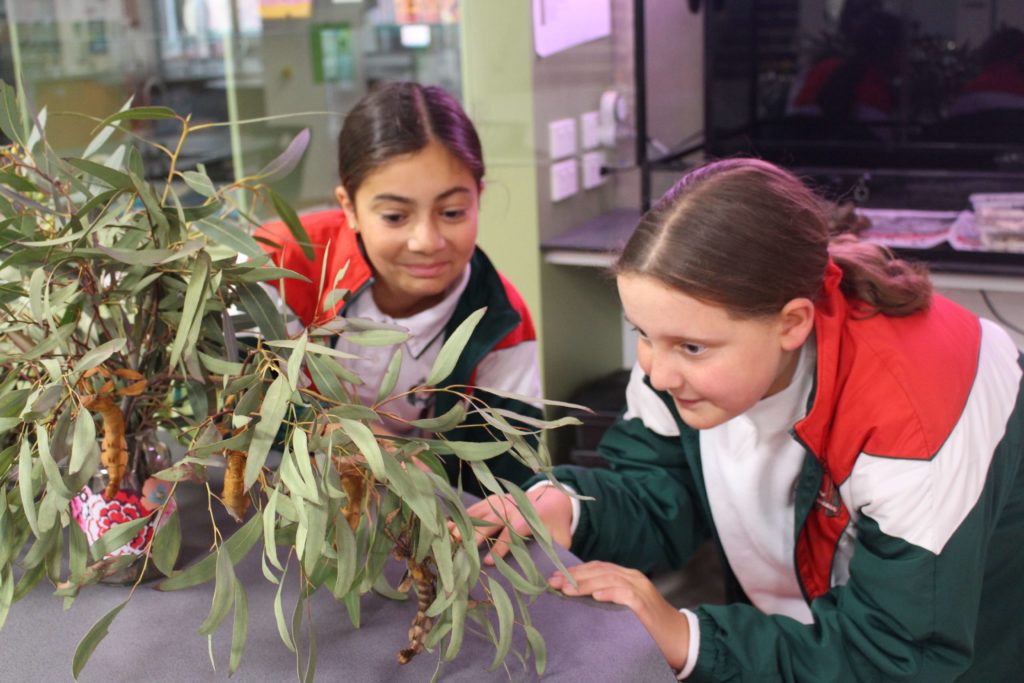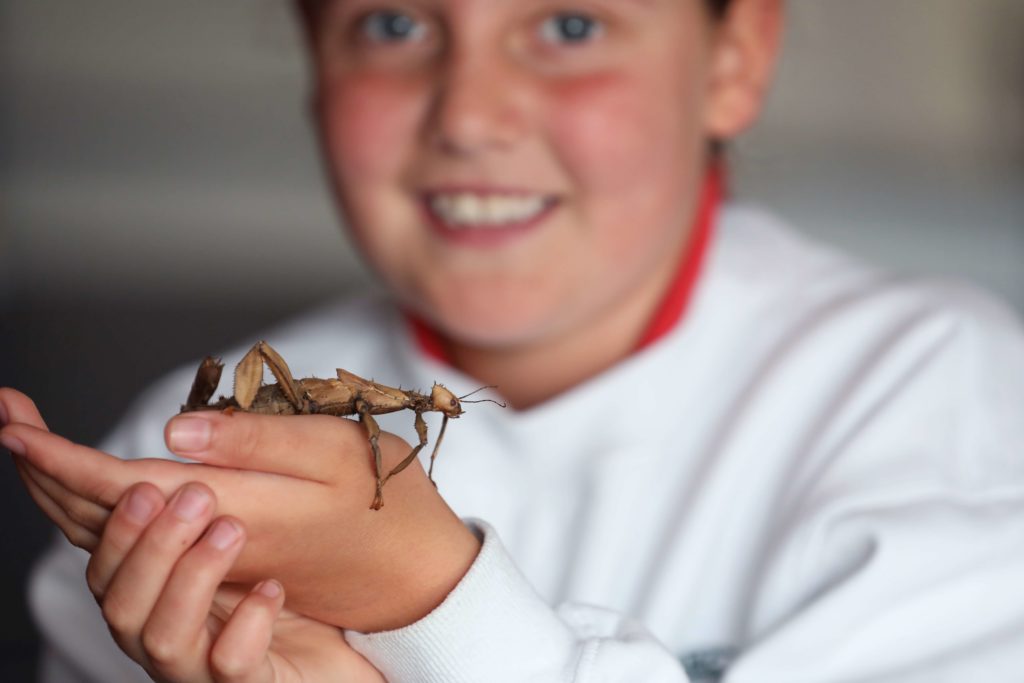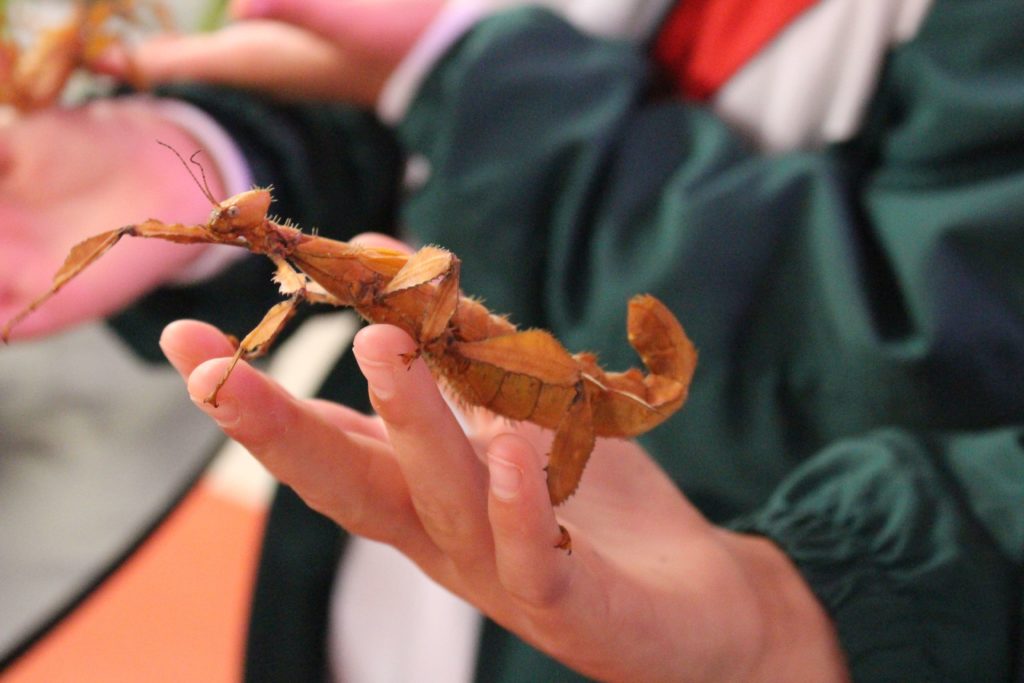Looking After Our Stick Insects

Pets are great, they bring lots of joy, but have you thought about a spiny leaf phasmid as a pet?
Well, Santa Maria has a number of them. Better known as stick insects, our current pets are the third generation.
Earlier this year, some of the junior classes had a cage in each of their rooms to help the girls learn about adaptations. Since their return to the Science Department, three Year 6 students, Sophia Massie-Taylor, Niamh Jones, and Matilda Tate, have visited the insects most mornings. The girls help Science Technician, Sally Nettleton, to clean out their enclosure, collect their eggs and change their leaves.
Sally said, “The stick insects are a fantastic resource used to teach about adaptations and classification. But they also encourage students to come into the Science department to explore and ask questions.”

We asked the girls about why they help out. Sophia said, “I love helping out with the stick insects because it is so much fun to hold them and watch them grow. Everything about helping the stick insects is fun. Whilst you are trying to transfer them from the old leaves to the new leaves and once they get used to you, they won’t leave your arm and you get to pet them, and it is really fun.”
Matilda said, “I enjoy helping with the stick insects because they are a very cool animal to look at. I can hold them and be hands-on with them and touch them, I also like them because they don’t bite or sting so they can’t hurt you as you handle them. The best thing about them is they are chill about you picking them up and holding them.”
Niamh said “I enjoy helping out with the stick insects because I enjoy watching them grow and shred and seeing how they are going food-wise and colour-wise. I love holding them and feeling them walk up my arm and its sticky little legs on my hand/arm.”

Here are a few interesting facts about Spiny Leaf insects.
- Adult spiny leaf insects are more like dead leaves than sticks and are very hard to spot in the wild as they hang motionless from foliage.
- They are leaf-eaters and are found in the northeast of Australia.
- Females can grow up to 20 cm in length. Males grow up to 11 cm.
- They have a very interesting reproductive cycle, beginning with the eggs being tossed individually by females from the trees down to the forest floor. The eggs look very much like plant seeds and are often collected by ants and stored below ground in their nests which protects the egg from predators.
- After hatching, the baby leaf insects (nymphs) must make their way to the surface and into a tree.
- Nymphs mimic the appearance of an ant at this stage of its life – this doesn’t fool ants but does fool other animals such as birds that don’t like eating ants.
- Once in a tree, it begins to feed on leaves and grows by shedding its outer skeleton (exoskeleton). This process is called ecdysis or moulting.
- Males will do this five times, and females six times to reach maturity. To moult successfully the insect needs to hang uninterrupted beneath a leaf or branch. This can take 10 minutes to half an hour.
- Many phasmids (including spiny leaf insects) are parthenogenetic. This means that females don’t need to mate to reproduce. So, if you only have a single female, she can still produce young replicas of herself.
Source: https://www.minibeastwildlife.com.au/resources/spiny-leaf-insect/


Exploring the Artistic Universe of Isabelle De Klein (2011)
From childhood, Isabelle de Klein’s talent flourished, guided by the supportive Art department into the renowned artist she is today.

What A Term! So Many Opportunities – Jennifer Oaten
As I look back on the past nine weeks, I am so grateful for who we are as a community and what we have achieved. Through the dedication of our staff and the enthusiasm of our students, we have established new connections, immersed ourselves in opportunities and worked through challenges.

The Holiest Time of the Year
Palm Sunday marks the beginning of Holy Week, signalling the conclusion of Lent and ushering us into the holiest time of the year.
- Collaboration, ConnectingLearning2Life, Featured, Stewardship
Author: Santa Maria College
Santa Maria College is a vibrant girls school with a growing local presence and reputation. Our Mission is to educate young Mercy women who act with courage and compassion to enrich our world. Santa Maria College is located in Attadale in Western Australia, 16 km from the Perth CBD. We offer a Catholic education for girls in Years 5 – 12 and have 1300 students, including 152 boarders.







